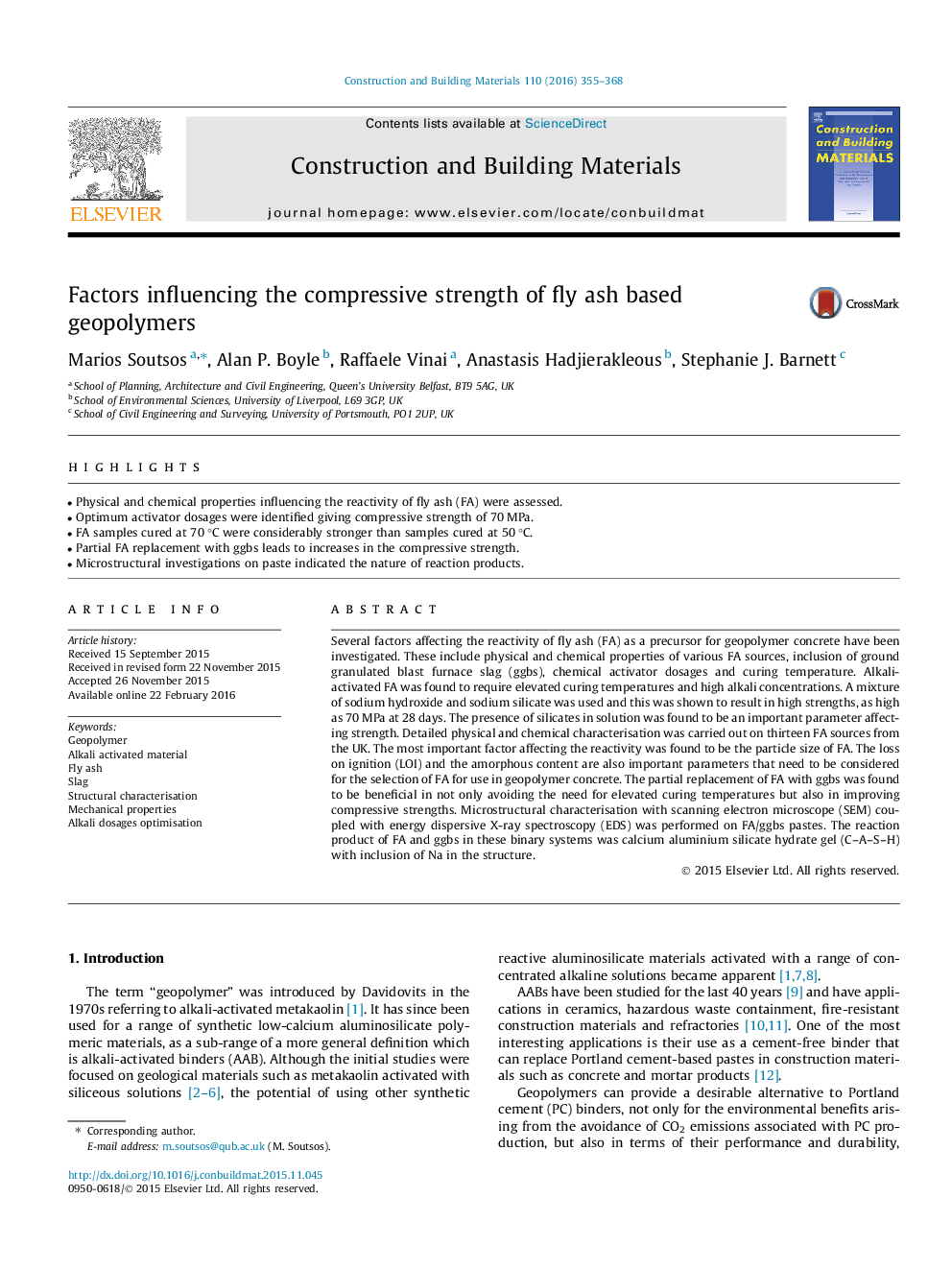| کد مقاله | کد نشریه | سال انتشار | مقاله انگلیسی | نسخه تمام متن |
|---|---|---|---|---|
| 256092 | 503540 | 2016 | 14 صفحه PDF | دانلود رایگان |

• Physical and chemical properties influencing the reactivity of fly ash (FA) were assessed.
• Optimum activator dosages were identified giving compressive strength of 70 MPa.
• FA samples cured at 70 °C were considerably stronger than samples cured at 50 °C.
• Partial FA replacement with ggbs leads to increases in the compressive strength.
• Microstructural investigations on paste indicated the nature of reaction products.
Several factors affecting the reactivity of fly ash (FA) as a precursor for geopolymer concrete have been investigated. These include physical and chemical properties of various FA sources, inclusion of ground granulated blast furnace slag (ggbs), chemical activator dosages and curing temperature. Alkali-activated FA was found to require elevated curing temperatures and high alkali concentrations. A mixture of sodium hydroxide and sodium silicate was used and this was shown to result in high strengths, as high as 70 MPa at 28 days. The presence of silicates in solution was found to be an important parameter affecting strength. Detailed physical and chemical characterisation was carried out on thirteen FA sources from the UK. The most important factor affecting the reactivity was found to be the particle size of FA. The loss on ignition (LOI) and the amorphous content are also important parameters that need to be considered for the selection of FA for use in geopolymer concrete. The partial replacement of FA with ggbs was found to be beneficial in not only avoiding the need for elevated curing temperatures but also in improving compressive strengths. Microstructural characterisation with scanning electron microscope (SEM) coupled with energy dispersive X-ray spectroscopy (EDS) was performed on FA/ggbs pastes. The reaction product of FA and ggbs in these binary systems was calcium aluminium silicate hydrate gel (C–A–S–H) with inclusion of Na in the structure.
Journal: Construction and Building Materials - Volume 110, 1 May 2016, Pages 355–368